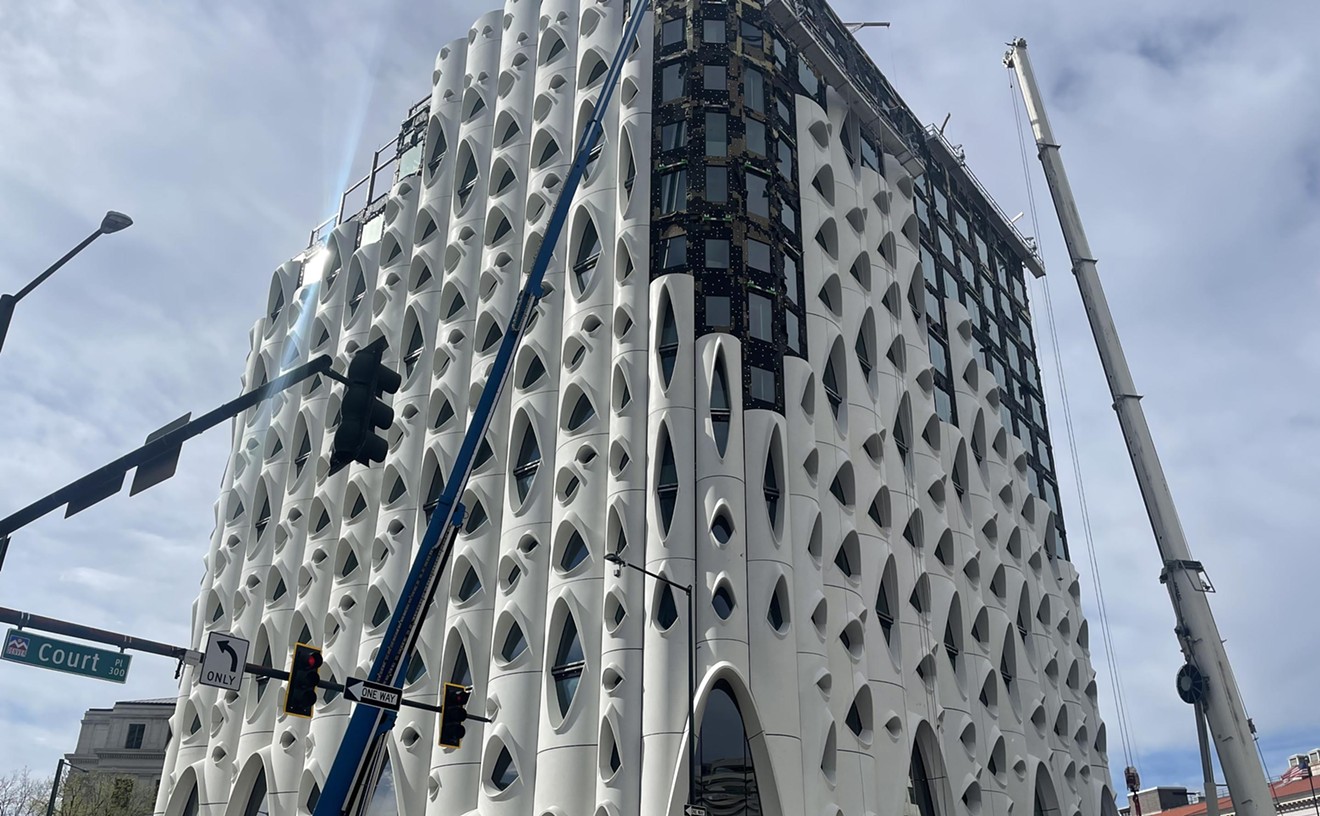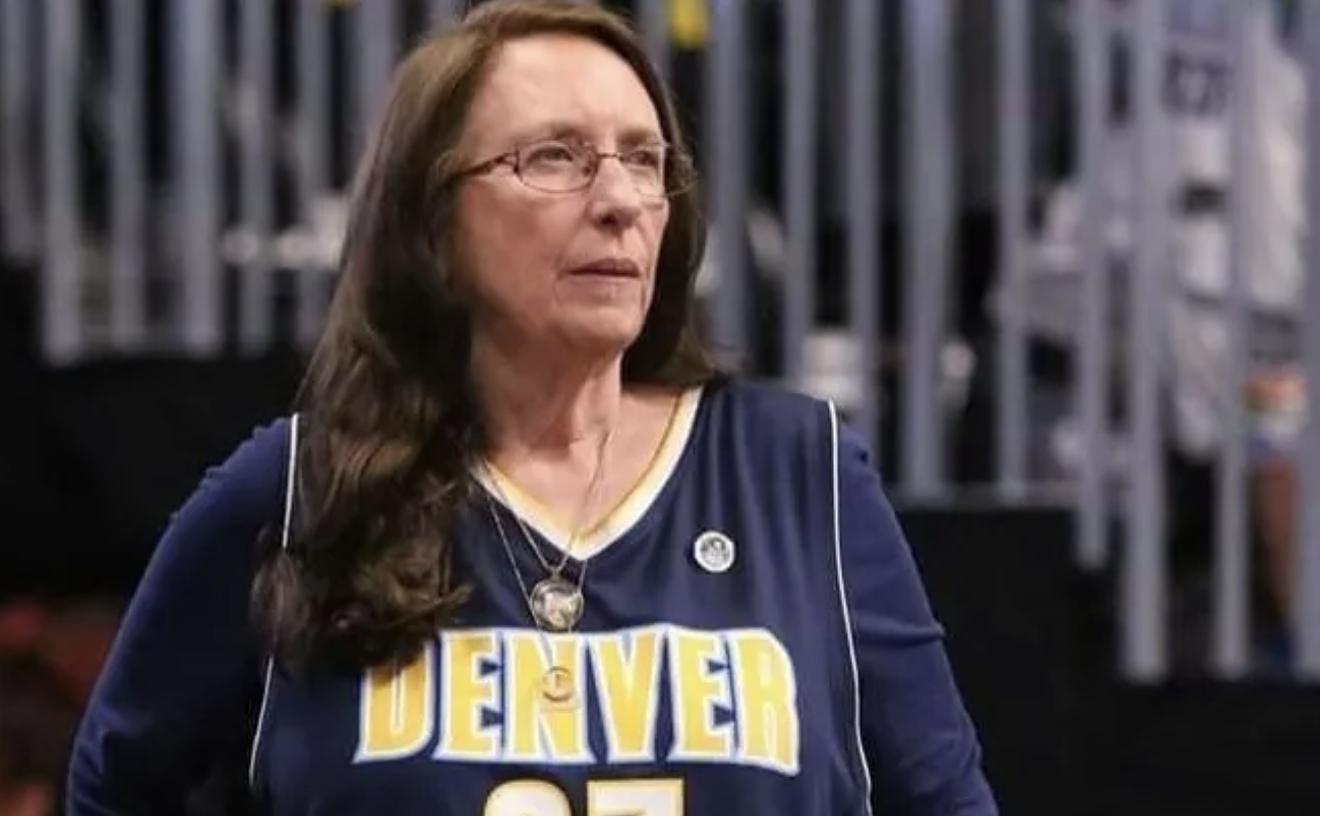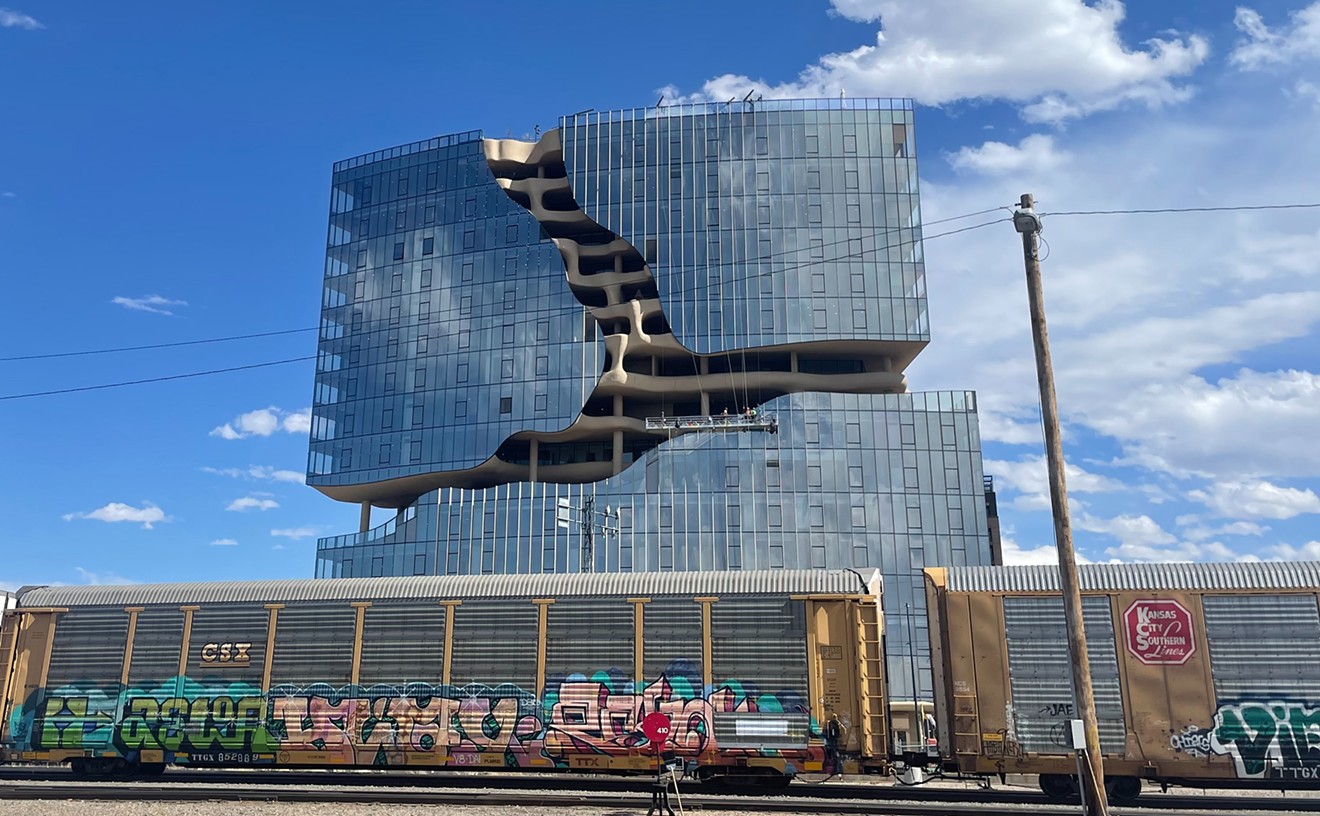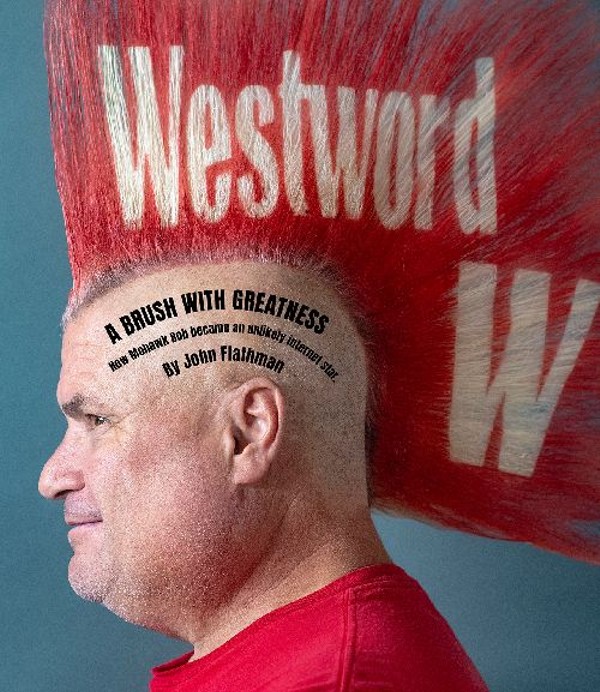See also: Photos of the 16th Annual Spiritual Healing Run on the 150th Anniversary of the Sand Creek Massacre
Hickenlooper was standing on the steps of the State Capitol, the final stop of the sixteenth annual Spiritual Healing Run, designed to heal the wounds of 150 years and cleanse the 180 miles between Sand Creek and Denver, the route that Chivington's men had taken as they left the killing fields, loaded with trophies that included scalps and other body parts. Just two weeks after the slaughter, Captain Silas Soule, who'd refused to have his regiment join in the killings by the until-then "Bloodless Third" volunteers, wrote about the horrors he'd witnessed at Sand Creek to his former commander, Major Edward "Ned" Wynkoop. He wrote about how he'd seen babies' brains bashed in. He wrote about how he'd seen mothers killed trying to protect their children. He wrote about the bodies being desecrated. And he later testified about what he'd seen before Congress, which conducted two investigations into Sand Creek (the Army held a third) and declared it a massacre in 1865. As thanks for his courage, Soule was killed on the streets of Denver in April 1865, shortly after President Abraham Lincoln was assassinated.
After three days of running across the plains, the Spiritual Run had started out on the morning of December 3 at Riverside Cemetery, where Silas Soule is buried. In the military section of Denver's oldest cemetery, tribal members had joined in prayers and a song in Soule's honor as the smell of sweetgrass filled the air.And then the runners had headed downtown for a quick stop at 15th and Arapahoe streets, where Soule was killed, and on to the Capitol. "Let's let Denver and Colorado know we're still here," said Otto Braided Hair, head man of the Crazy Dog Society of the Northern Cheyenne, whose brother, Steve Brady Sr., had played such a critical role in having the massacre site made a historic monument. Steve Brady passed away this fall; the sixteenth annual healing run was officially dedicated to him. But it also honored the ancestors who had been killed at Sand Creek as well as those who had escaped the carnage, fleeing up the dry creek bed and out of their ancestral lands in what had become the territory of Colorado, starting new lives in Oklahoma, Montana and Wyoming.
Now, 150 years later, their descendants were back home in Colorado, a state that hadn't even existed at the time of the massacre and whose statehood was set back a dozen years by the barbarity of that action. They were standing by a Civil War monument erected a century ago by the Pioneers' Association, which lists Sand Creek as one of the battles of that long and bloody war. Two dozen years ago, after a lawmaker suggested removing Sand Creek from that memorial, tribal members had stepped in and said that history should not be erased, but explained. And so a new plaque was added, clarifying what Chivington's action really had been.In his speech, the governor made sure there would be no future confusion about the atrocities at Sand Creek, his words following the path of those who ran, "so that people would never forget what happened." Hickenlooper told how Black Kettle, who'd been taken by Wynkoop to meet with territorial governor John Evans just two months before, believed that the camp was under the protection of the U.S. government. He'd raised the American flag, the white flag. The soldiers fired anyway. Hickenlooper told how Chief White Antelope, one of the eleven chiefs killed that day, had stood his ground and sung the death song: "Nothing lives long, only the earth and the mountains." He read from Silas Soule's letters. He talked about the congressional committees. He spoke of the "deep moral failure" of Evans. "We should not be afraid to criticize and condemn," he said. And then he apologized.
The governor told the crowd that he did not make that apology lightly. In fact, he'd thought about it for months, since he'd appointed the Sand Creek Massacre Commemoration Commission nine months earlier; in recent weeks, he'd contacted attorneys to talk about potential legal liability, reached out to others to discuss cultural and moral ramifications. "I wanted people who cared about the state and had a historical perspective, wanted to assess their response," Hickenlooper says now. He did not talk to political pollsters, but he did reach out to the four living former governors -- Richard Lamm, Roy Romer, Bill Owens, Bill Ritter -- whose time in office stretched back forty years, and told them what he wanted to do. "All had different takes on it, but each one was supportive," Hickenlooper remembers. And he worked and reworked his speech the night before the gathering at the Capitol; many of his staffers had no idea what he was going to say.
The speech included something that Lamm had reminded him of, the power of two simple words: "I'm sorry." When Hickenlooper repeated those words at the Capitol, many in the audience wept.
Continue for more on Hickenlooper's apology. "It was a great way to cap a long, difficult but important history," says Ernest House,head of the Colorado Commission of Indian Affairs, a liaison with Colorado's tribes who also worked with the Northern Cheyenne, the Northern Arapaho, and the Cheyenne and Arapaho of Oklahoma on the commemoration of the Sand Creek Massacre. House has been holding to the Memorandum of Agreement that the state worked out with the tribes when controversy over a History Colorado exhibit flared up; that MOA is the equivalent of "today's treaties," he says, and "gives respect to the treaties done with ancestors." At the Capitol, Hickenlooper did not talk about his own history with the Sand Creek Massacre. It stretches back not 150 years, but almost thirty, to the days when he and his partners were trying to come up with a name for Denver's first brewpub, which they were opening in a historic warehouse that bordered Wynkoop Street. Hickenlooper looked into Ned Wynkoop's background and found he was a man in pursuit of peace. The business was named the Wynkoop Brewing Company, and Hickenlooper has never forgotten what he learned about the Sand Creek Massacre back then, when details were hard to come by. "I spend most of my life talking about our successes and triumphs," the governor admits, "but you also have to be able to be willing to face up to the facts of history."Since he did, since he put the state's apology on record, he's been surprised by how little grousing there's been, by how many e-mails and texts he's received from those who say, "I'm proud to be a Coloradan."
But Colorado's work didn't end with that apology. As Hickenlooper said at the Capitol, "We will not run from our history. I will make sure this history continues to be told."
This week, the Sand Creek Massacre Commemoration Commission will meet for the last time, to talk about where to go from here. Hickenlooper and Lieutenant Governor Joe Garcia, who oversees the Colorado Commission of Indian Affairs, are scheduled to be there, as is House. The members will talk about what still needs to be done: the signs that the state will put up outside the massacre site; the interpretative lessons that the National Park Service still plans for the site; the visitor's center that is being constructed in downtown Eads.
Hickenlooper has his own ideas for how to make sure that history will continue to be told. It may be told at a permanent exhibit somewhere on the grounds of the State Capitol; it may be told in suggested readings at schools. "The history will be out there in a way that provides education going forward," he says. "I think that's part of what an apology entails."
And the tribal members will talk about how the past can be remembered, even as they look to the future. They say the governor's apology played a huge role in healing, in making it possible to go forward.
The governor gave his apology speech to Ernest House for safekeeping. House says it still smells of the sweetgrass with which the elders blessed the Capitol that morning.
Keep reading for Governor John Hickenlooper's full speech on the 150th Commemoration of the Sand Creek Massacre.Governor John W. Hickenlooper 150th Commemoration of the Sand Creek Massacre December 3rd, 2014 in Denver, Colorado (State Capitol)Send tips to [email protected].I want to give a special thanks and recognition to the Sand Creek Spiritual Healing runners who are here this morning.
From their starting point at Sand Creek in Eads, Colorado, to the state capitol, they have traveled a distance of 180 miles.
That is a remarkable feat.
At times, I suspect, some of them experienced pain; some of them may have thought about giving up.
But, of course, these are not just any runners.
They are representatives of the Cheyenne and Arapaho Tribes, and they most definitely did not give up.
These runners offered up their pain and struggle as a relatively small sacrifice. ... ... As a tribute to the Cheyenne and Arapahoe Indigenous people who woke to--and were murdered in--an unthinkable nightmare 150 years ago this past November.
These Cheyenne and Arapahoe here before us pushed through their pain and kept running so that no one would ever forget what happened.
And we will not.
On that morning of November 29, 1864, well over 600 hundred heavily armed United States cavalry approached a bend in a dry riverbed.
Most were members of the Third Colorado Cavalry with a contingent of about 125 troops from the veteran First Cavalry.
Their Commanding Officer was Colonel John Chivington.
At dawn, they arrived at that dry riverbed called Sand Creek, an isolated, open space on the wind-swept plains.
In the riverbed below the US forces was an encampment of 200 Cheyenne and Arapahoe.
Weeks earlier, Chief Black Kettle had met with Governor John Evans here in Denver.
It was a meeting that had been brokered by Major Edward Wynkoop. Wynkoop had put himself at great risk in arranging the meeting, but he was a man in pursuit of peace. Black Kettle agreed to a truce and had been assured--or so he thought--that his people would have safe refuge at Sand Creek.
A month later, when Chivington and his men arrived at Sand Creek, most of the tribes' young warriors were off hunting the buffalo they would need to survive the winter.
The majority of the Indians left in the camp were asleep in their tipis, wrapped in blankets and the belief that they had been promised no harm.
Looking upon the sleeping tribes, Col. Chivington rallied his troops by reminding them that Native American Warriors had killed white-settler families.
Then Chivington gave the order to charge.
When the attack began and the shots rang out, Black Kettle exited his tent. He raised a pole with an American flag. The flag had been presented to him by the commissioner of Indian Affairs.
So there could be no misunderstanding, Chief Black Kettle also raised a white flag. But the bullets kept coming and Black Kettle retreated.
Another chief, White Antelope, ran toward the commanders. A member of the US Forces later testified that White Antelope held up "his hands and shouted, "'Stop! Stop!'" Speaking in plain, clear English.
As the firing intensified, White Antelope folded his arms and calmly began to chant what would be his death song: "Nothing lives long, except the Earth and the mountains."
Riddled with bullets, Chief White Antelope crumpled in the creek bed. The massacre lasted for nine hours, well into the afternoon.
At one point, after several cavalrymen were killed, the US Forces turned howitzers onto the Indians and cut them down at close-range.
According to federal investigations, acts of wanton depravity were rampant. Capt. Silas Soule, who refused to allow the men in his command to participate in the slaughter, later wrote to Major Wynkoop:
"I tell you Ned it was hard to see little children on their knees have their brains beat out by men professing to be civilized. One squaw was wounded and a fellow took a hatchet to finish her, she held her arms up to defend her, and he cut one arm off, and held the other with one hand and dashed the hatchet through her brain."
Maj. Scott J. Anthony, in charge of a Fort Lyon battalion, later testified that soldiers used a toddler for target practice as he straggled behind his fleeing family.
"I saw one man get off his horse, at a distance of about seventy-five yards, and draw up his rifle and fire--he missed the child," Maj. Anthony said. "Another man...got down off his horse, kneeled down and fired at the little child, but he missed him. A third man came up and...and fired and the little fellow dropped."
The first Denver newspaper reports of Sand Creek told a different story, one of Calvary heroes fighting off brutal savages. The men of the Third returned to Denver parading their souvenirs. "Cheyenne scalps are getting as thick here now as toads in Egypt," the Rocky Mountain News reported.
Of the Native American victims, about three-fourths were women and children. Among the older men who perished were eleven chiefs -- the Arapaho, Left Hand, and ten Cheyennes. Chief Black Kettle survived, but the death of so many key figures created a terrible void in tribal leadership.
Because Black Kettle and all of these leaders had favored peace with the American authorities, many southern Plains Indians were now convinced that armed resistance was their only option.
In 1865, the "Joint Committee on the Conduct of the War" determined that "the truth" was that Col. Chivington ".. surprised and murdered, in cold blood, the unsuspecting men, women, and children on Sand Creek, who had every reason to believe they were under the protection of the United States authorities."
Governor John Evans was a founder of both the University of Denver and Northwestern University. This year, both universities convened panels to investigate the role of Governor John Evans.
The University of Denver's panel concluded that Evans' [actions and in-actions] clearly demonstrate a significant level of culpability for the Sand Creek Massacre." Northwestern University's panel found that no "known evidence indicates that John Evans helped plan the Sand Creek Massacre or had any knowledge of it in advance. ... "Nonetheless he was one of several individuals who, in serving a flawed and poorly implemented federal Indian policy, helped create a situation that made the Sand Creek Massacre possible." Northwestern's report adds that "John Evans's conduct after the Sand Creek Massacre reveals a deep moral failure that warrants condemnation. While he denied any role in the massacre, he refused to acknowledge, let alone criticize, what had happened, even going so far as to defend and rationalize it."
Today, we gather here to fully acknowledge what happened--the massacre of Sand Creek.
There is no rationalizing; there should be no sugar-coating history.
We should not be afraid to criticize and condemn that which is inexcusable. So I am here to offer something that has been too long in coming.
On behalf of the State of Colorado, I want to apologize. And I don't make that apology lightly. I talked to all of the living former Governors of Colorado going back for the past 40 years and each one of them agrees and in spirit is standing here beside me.
Governor Lamm commented that two of the most powerful words in the English language are I'm sorry.
To the runners, to the Tribal Leaders, and to all of the Indigenous people--and the proud and painful legacy you all represent--On behalf of the good, peaceful and loving people of Colorado, I want to say, I am sorry for the atrocity that our government and its agents visited upon your ancestors.
Today, as these runners complete their 16th annual Sand Creek Spiritual Healing Run, I want to assure you that we will not run from this history, and that we will always work for peace and healing.
I will make sure that this history is told. I have a proclamation. Sand Creek Massacre Spiritual Healing Run and Remembrance Days November 29-December 3, 2014 Whereas, in the State of Colorado, indigenous peoples have a rich, ongoing cultural, historical and occupational legacy of ties to the lands of Colorado that continue to this day; and
Whereas, the site has been established as the Sand Creek Massacre National Historic Site under Act of Congress, P.L. 106-465, signed into law by the President of the United States, and dedicated by the U.S. Secretary of the Interior on April 27, 2007; and
Whereas, November 29, 2014 is the 150th Anniversary of the Sand Creek Massacre, and this year marks the 16th Annual Spiritual Healing Run, which begins at the Sand Creek Massacre National Historic Site near Eads, Colorado and will end at the steps of the Colorado State Capitol Building in Denver; and
Whereas, the participants of the Spiritual Healing Run, representing the delegates of many of the American Indian Nations, will meet, pray, and participate in traditional activities with the members of the American Indian community and supporters in remembrance of the Cheyenne and Arapaho ancestors killed and wounded in the 1864 Sand Creek Massacre; and
Whereas, the Spiritual Healing Run is a historical event that will be spoken of in the oral histories of American Indian storytellers who share the legacies, legends, histories, and significance of the lives and cultures of America's indigenous people; and
Whereas, this year's Sand Creek Massacre Spiritual Healing Run honors the memory and contributions of the highly respected Steve Brady, a tribal elder of the Northern Cheyenne Tribe, who on October 18, 2014, walked on; and
Whereas, the State of Colorado recognizes and acknowledges the importance of the Sand Creek Massacre in its history books so that future generations learn from our past and healing from this devastating event continues;
Now Therefore, I, John W. Hickenlooper, Governor of the State of Colorado, do hereby proclaim November 29-December 3, 2014, as the
Sand Creek Massacre Spiritual Healing Run and Remembrance Days in the State of Colorado











